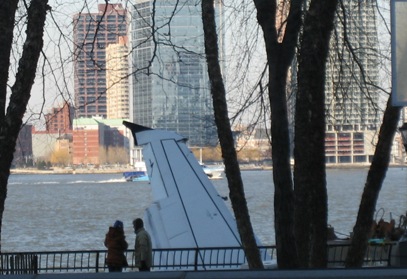The US National Transportation Safety Board (NTSB) says it will lift the submerged US Airways A320 from the Hudson River in downtown New York starting 1000h Saturday morning, a required step in retrieving the flight data and cockpit voice recorders from the aircraft.
Information on the devices will be key to reconstructing the chain of events that led to the ditching of US Airways Flight 1549 with 150 passengers and five crew Thursday afternoon. All passengers and crew survived the accident and were rescued from the river by boat.
Also critical to understanding the accident will be finding the A320’s two CFM56-5B4/P engines, which most likely sheared from the wing attach points when the aircraft splashed down in the river just after 1530h on Thursday after a departure from LaGuardia Airport minutes before. According to the FAA preliminary incident report issued today, the aircraft made a forced landing on the river “after striking birds and losing engine power”.
 ©A.Flack
©A.Flack
Evidence of bird collisions should be present in the mechanisms of the engines, said NSTB board member Kitty Higgins during a press conference today.
In the past NTSB has worked with the Smithsonian Institution through DNA analysis to identify bird types that have struck engine parts even if the components were submerged in water.
Higgins says investigators will also look at air traffic radar data for evidence of a flock of birds along the flight path.
New York City police and the US Army Corps of Engineers are using side-scan sonar attached to boats to locate the engines, starting at the point where the aircraft touched down on the water and moving downstream from there, Higgins said.
Flight attendants and air traffic controller interviews are ongoing today, and the two pilots will be interviewed tomorrow morning says Higgins. Drug testing of the pilots is complete, she adds.
Source: FlightGlobal.com













